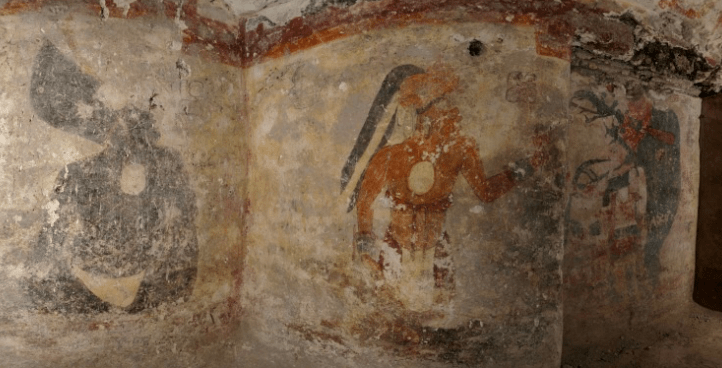One of the biggest raves ever is coming on December 21, 2012 — at least according to the beloved tin-foil hat faction of the human race. Apparently, a calendar designed by the Mayans predicted that the end of the world was coming on that very date just seven months from now, and some people just decided to run with it and take it as 100 percent truth. But now, markings on newly discovered, 1,200-year-old Mayan murals that have just been unearthed in Xultún, Guatemala might fly right in the face of all those bummer doomsday predictions. In fact, they are being interpreted as a sign that we have many more millennia ahead of us — so, yes! Mayan science fiction means that the Earth will survive to see a sequel to The Avengers. This is a glorious find, indeed!
Found beneath six square miles of the Guatemalan jungle, these murals are shedding new light on the Mayan culture and what they believed the future had in store for the human race. And contrary to popular belief, that does not include a Book of Revelations-style, Roland Emmerich-directed, Earth-swallowing catastrophe the likes of which we have never seen because, well, if we’d been around when the world ended, nothing we would have written down would have survived. Including us. (Duh.) No, in fact the murals show a ton of calculations that suggest that the planet will exist for many, many more years. Thousands and thousands of them.
The room containing the calculations appeared to be a Mayan workspace complete with benches and tables where scribes toiled and created books that disappeared with time. The room in question, a scribe’s chamber, was located not far from the pyramids of the Mayan kings and high priests. And aside from some looting, the room is said to be in excellent condition — including the markings on the wall.
One is a lunar table, and the other is a “ring number” — something previously known only from much later Maya books, where it was used as part of a backward calculation in establishing a base date for planetary cycles. Nearby is a sequence of numbered intervals corresponding to key calendrical and planetary cycles.
The calculations include dates some 7,000 years in the future, adding to evidence against the idea that the Maya thought the world would end in 2012 — a modern myth inspired by an ancient calendar that depicts time starting over this year.
Excavation leader William Saturno says that he and his team kept “looking for endings,” but instead found “an entirely different mindset” than the 2012 predictions we know and love and fear and laugh at: “The Maya were looking for a guarantee that nothing would change.”
Of course, the world changed quite a bit. And if there was a doomsday that concerned the Mayans, it wasn’t the end of the whole world — it was the end of their own. At the time of the murals, the region was going through a drought, which was affecting the economy and the health and well-being of everyone. Other Mayan cities were collapsing completely. And scribes depended on astronomical calculations the way Wall Street depended on the stock market.
Sadly, but not unpredictably, a lot of the writings are faded and unreadable. But the discovery alone is special all by itself. Many archaeologists didn’t think there was anything worth looking for in Xultún because of what was assumed lost in the looting. But now that they did look, the team — and everyone who loves this stuff — is pretty darn excited.
“To be uncovering glyphs and reading them right off the wall—to be the first one in 1,200 years to read something? I mean, it’s pretty wild,” [Ph.D. student Franco] Rossi said.
It is pretty wild. And now we can stop talking about the end of the world. Because seriously, there are way too many things to look forward to.
(National Geographic via The Hairpin)








Published: May 11, 2012 11:44 am